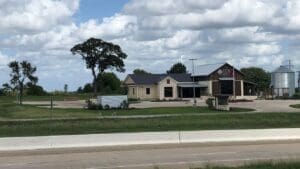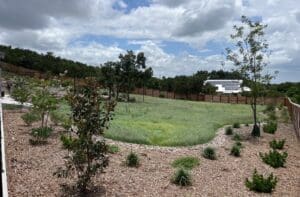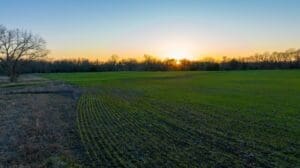A silt fence is a temporary sediment control device used in construction, landscaping, and other projects to prevent the migration of sediment and silt into nearby water bodies, storm drains, or sensitive areas. It is designed to intercept and filter sediment-laden runoff, helping to protect water quality and prevent soil erosion.
A silt fence typically consists of a woven geotextile fabric that is installed vertically along the contour of the land, creating a barrier that captures sediment while allowing water to pass through. The fabric is supported by wooden or metal posts driven into the ground and is often attached to a wire mesh or a chain-link fence for additional stability.
The installation process of a silt fence generally involves the following steps:
- Site Assessment and Planning: The site is assessed to determine the appropriate location for the silt fence installation. Factors such as slope, drainage patterns, and proximity to water bodies are considered.
- Trenching: A shallow trench is excavated along the desired alignment of the silt fence. This trench is typically 6 to 12 inches deep and should follow the contour of the land to capture runoff effectively.
- Installation of Posts: Wooden or metal posts are inserted into the trench at regular intervals, typically 6 to 8 feet apart. These posts are driven into the ground to provide support and stability for the silt fence fabric.
- Attaching the Fabric: The geotextile fabric is unrolled along the trench, extending from one post to another. The fabric is attached to the posts using wire ties or staples, ensuring a secure and taut installation.
- Backfilling: The excavated soil is backfilled into the trench on the downhill side of the silt fence to provide additional support and stability.
- Maintenance and Inspection: Regular maintenance and inspection of the silt fence are essential to ensure its effectiveness. The fence should be monitored for damage, sediment accumulation, or signs of failure, and necessary repairs or maintenance should be carried out promptly.
The primary function of a silt fence is to trap sediment-laden runoff and allow water to pass through, thereby reducing the amount of sediment reaching water bodies. However, it is important to note that silt fences have their limitations and may not be suitable for all situations. Factors such as slope, soil type, and rainfall intensity should be considered when determining the appropriate sediment control measures for a specific project.
Silt fence is a perimeter sediment control device. Generally, silt fence is constructed of porous woven geotextile fabric attached to wooden posts. Silt fence is a linear fence installed at the edge of earth disturbances. The purpose of silt fence is to protect downslope surface waters and properties by removing suspended solids from runoff prior to leaving the site.
🌱🚀 Ready to Transform Your Landscape? Contact Us Today! 📝
BV HydroSeeding, an owner-operated company, is dedicated to delivering exceptional hydroseeding and erosion control solutions. Want to add vibrant wildflowers to your hydroseeding blend, bringing captivating colors to your pasture, pond, or any desired area?
Discover the full extent of what we can do for your residential or commercial property by reaching out to the experts at Brazos Valley Hydroseeding. Our team is eagerly waiting to meet you, understand your needs, and provide tailored solutions for your hydroseeding and erosion control requirements. Don’t wait any longer – Contact us today! Let’s embark on this green journey together.






